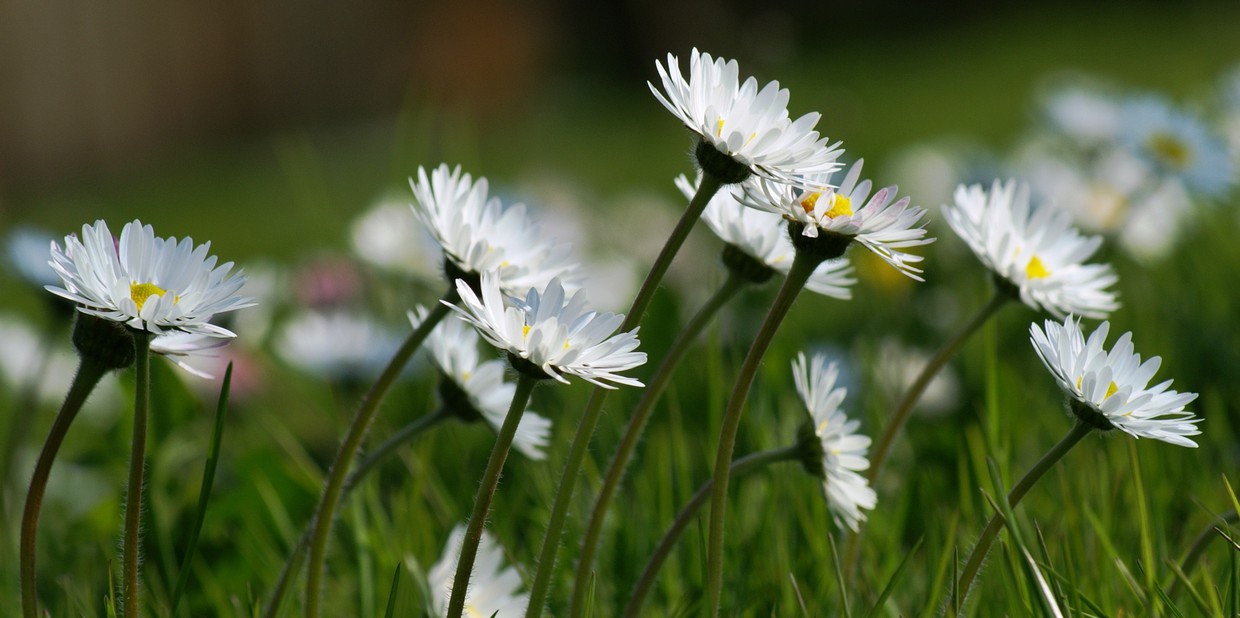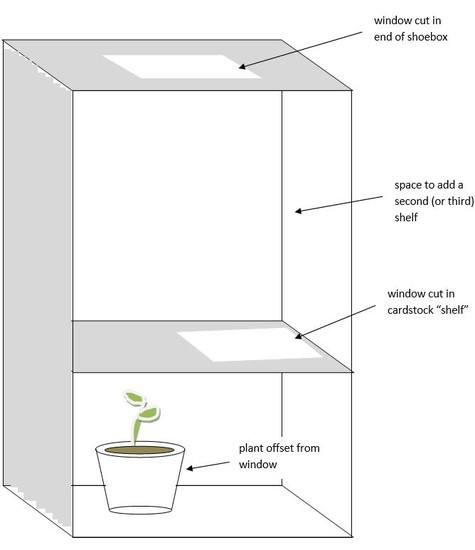Elementary Informal Education | Daily Do
How Will The Plant Grow?

Disciplinary Core Ideas Is Lesson Plan Life Science NGSS Phenomena Science and Engineering Practices Elementary Informal Education Grade 1 Grade 2 Grade K
Introduction
Have you ever noticed plants in a sunny window all leaning or pointing toward the sun? Have you ever stopped to wonder why? In today's task, How will the plants grow?, students and their families engage in science and engineering practices and use the thinking tools of patterns and cause and effect to make sense of the science idea plants need sunlight to grow.
Pre-K and kindergarten students and their families might choose to first participate in the Daily Do Where did the plant come from? Second-grade students and their families might use this task to begin making sense of the science idea plants depend on water and light to grow.
Further Reading
- Needs of Seeds
Formative assessment probe
Formative assessment probes can be used to provide an opportunity for students to share their thinking about a science idea or concept that is developed in this Daily Do lesson.
Experience the Phenomenon
Tell students you have a really interesting phenomenon to share with them. Play the video (without sound to reduce distractions) from 0:00 to 0:22. You might play the video a second time. Ask students to write and/or draw what they observed. Play the video one more time and then let students add to their observations.
Give students an opportunity to share their observations with a partner. Then ask students, "What does this video make you wonder? Tell your partner what you are wondering about."
Next, ask students to share one thing their partner was wondering. Record the wondering on a whiteboard, poster, etc. Ask, "Did anyone else wonder the same thing?" Consider making tick marks or checkmarks to show how many students shared the same wondering. Continue until everyone's wondering is represented.
Student wonderings will likely include:
- What kind of plants are they?
- What are the brown things?
- Why did they bend?
- Why did they change the direction they were growing in?
- Why do they all do the same thing?
- Do all plants bend/change direction?
You might say, "Many of us are wondering why the plants bend one way and then change direction. Do you think we should investigate these questions first?"

Conducting the Investigation
Materials (per student pair or small group)
- *sprouted corn kernels (popcorn works), kidney beans, peas, or mung beans
- paper or plastic cup (5 oz - 8 oz)
- potting soil
- shoe box with **lid
- 1-2 pieces of card stock, pre-cut to fit snugly in the shoebox ("shelf style")
- scissors
- marker
*You may choose to sprout the seeds ahead of time or allow the students to do it. It will take about one week for the seeds to sprout.
**If you don't have a lid for the shoe box, you can use a piece of cardboard or card stock to cover it (or any other material that blocks light).
Directions
- Cut a window in one end of the shoe box. You may choose to pre-cut the window or draw an outline and make a starter cut for students to insert their scissors in the box.
- Cut a window in one of the pieces of card stock. The window should be closer to an end than the middle.
- Slide the card stock into the shoe box. If you have a glue gun available, you might put a small dot of glue on each side of the shoe box just below the shelf.
- Place the shoe box near a sunny window.
- Fill the cup with soil and gently tap the soil down into the cup. Continue to add and tap down soil until the cup is almost full.
- Plant two to three sprouted seeds in the cup.
- Place the cup in the shoe box. Make sure the cup is not under the window.
- Carefully put the lid on the shoe box.
Note #1: Water the plants as needed.
Note #2: Students may add a second shelf after the plant grows through the window of the first shelf.

You might ask students to predict how the plant will grow inside the box over time and explain their thinking in words, pictures, and symbols. Allow students time to think and explain their ideas independently. Then, ask students to put their predictions away - you will return to them later.
Consider waiting a week before observing the plants. Ask students to draw what they observe. Encourage them to create a drawing that accurately represents their plant(s). Ask questions such as
- How many leaves does your plant have?
- How do the leaves attach to the stem? (Do the leaves grow opposite each other? Do they alternate?)
- What color is the plant? Are all the leaves the same color? Are the leaves the same color as the stem?
- Where is the top of the plant compared to the window in the shelf? How might we measure this? (Where might we start a measurement? End?)
You might ask students to post their drawings around the room (or on a Jamboard, Padlet or Google slideshow) to compare similarities and differences. Ask students to turn to a partner or small group to share two similarities and one difference. Then ask the groups to identify any patterns in their observations (data). Bring the students back together and ask each group to share a pattern they noticed with the class. Create a class record of the patterns observed.
Return to the shoe box observations every few days. Allow students to add a new shelf once their plant(s) have grown through the existing window. As students work together to add a new shelf, ask them to share what they think will happen. Encourage them to use evidence from the class observations (data) to support their ideas.
Consensus Discussion
When the students' plants have made it through at least two windows, ask them to return to their prediction and explanation. Give students time to revise their explanations. As you move around the room, ask students why they are changing or adding to their explanations. Encourage students to use evidence from the class observations to support their ideas.
Next, ask students to share their explanations with a partner. Instruct them to share what they have added or changed and why.
Finally, bring the class back together. You might facilitate a consensus discussion using some or all of the following questions:
- Could someone restate the question we are trying to answer?
- What ideas do we have about how to answer the question?
- What is our evidence for those ideas?
- What ideas are we in agreement about?
Students will likely agree the plants "follow" the sun because they need it to grow. Return to the class list of questions and ask if we are now able to answer any other questions on the list.
You might end the lesson by saying, "Which question should we investigate next?"
NSTA Collection of Resources for Today's Daily Do
NSTA has created a How will the plant grow? collection of resources to support teachers and families using this task. If you're an NSTA member, you can add this collection to your library by clicking Add to my library (near top of page).
Check Out Previous Daily Dos from NSTA
The NSTA Daily Do is an open educational resource (OER) and can be used by educators and families providing students distance and home science learning. Access the entire collection of NSTA Daily Dos.


